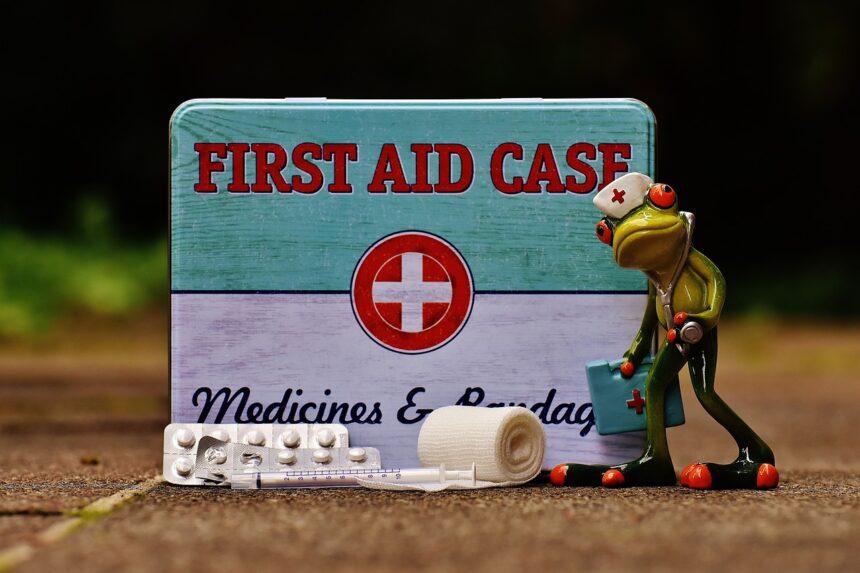We all need to be prepared to deal with emergencies. Over 90% of people have to respond to a family member’s emergency in their life and over 475,000 people die of cardiac arrest each year. First aid training can be helpful.
In remote areas, medical assistance may not always be readily available, making it crucial for individuals to possess basic first aid skills. Whether you’re an outdoor enthusiast, an adventurer, or simply find yourself in remote locations, knowing how to administer first aid can make a critical difference in emergency situations.
This article offers five essential tips for effectively providing first aid in remote areas, focusing on preparedness, resourcefulness, and quick thinking.
1. Get First Aid Training
The first and most crucial tip for administering first aid in remote areas is to prioritize obtaining proper training. Enrolling in a certified First Aid Course in Campbelltown equips individuals with the necessary skills to assess injuries, provide initial treatment, and stabilize patients until professional help arrives.
During a first aid course, participants learn how to recognize common medical emergencies, such as fractures, sprains, burns, and allergic reactions. They also gain practical experience in administering cardiopulmonary resuscitation (CPR) and using automated external defibrillators (AEDs) when necessary. Moreover, instructors often simulate real-life scenarios, allowing participants to apply their knowledge in a controlled environment.
One of the key benefits of first aid training is the emphasis on improvisation and resourcefulness, which are especially valuable in remote areas with limited medical supplies. Participants learn how to make use of available resources to fashion splints, bandages, and other makeshift medical tools.
Moreover, a first aid certification is often a prerequisite for certain outdoor activities, such as wilderness trekking, mountaineering, and water sports, highlighting its importance in remote environments.
2. Carry a Comprehensive First Aid Kit
In remote areas where access to medical facilities is limited, a well-equipped first aid kit can be a lifesaver. When assembling a first aid kit for remote travel, it’s essential to include a diverse range of supplies to address various medical emergencies effectively.
A comprehensive first aid kit for remote areas should include:
- Basic Wound Care Supplies: Adhesive bandages, sterile gauze pads, adhesive tape, antiseptic wipes, and wound closure strips are essential for cleaning and dressing wounds.
- Trauma Supplies: Include items such as trauma shears, elastic bandages, triangular bandages, and sterile gloves to manage more severe injuries like fractures and lacerations.
- Medications: Pack essential medications such as pain relievers, antihistamines, anti-inflammatory drugs, and any personal medications required by individuals in the group.
- Emergency Equipment: Carry items like CPR masks, a pocket mask for rescue breathing, a space blanket for hypothermia prevention, and a whistle or signaling device for attracting attention in emergencies.
- Specialized Equipment: Depending on the nature of the expedition, consider adding specialized equipment such as splints, tourniquets, SAM splints, and instant ice packs to address specific injuries and medical conditions.
- Instructions and Reference Material: Include a first aid manual or guidebook that provides step-by-step instructions for administering basic first aid procedures. Additionally, consider laminating reference cards with essential medical information and emergency contact numbers.
Regularly check and replenish the contents of your first aid kit to ensure that supplies are up-to-date and not expired. Familiarize yourself with the items in your kit and their proper usage before embarking on your journey.
3. Assess Risks and Plan Accordingly
Before setting out on any expedition to a remote area, it’s essential to conduct a thorough risk assessment and plan accordingly. Familiarize yourself with the terrain, climate, and potential hazards specific to the region you’ll be visiting. Consider factors such as wildlife encounters, weather conditions, altitude sickness, and waterborne illnesses when preparing for your journey.
Carry adequate supplies of food, water, and protective gear to mitigate risks and ensure the well-being of yourself and your companions. In addition to your first aid kit, consider packing emergency communication devices such as satellite phones, personal locator beacons (PLBs), or two-way radios to summon help in case of emergencies.
Develop a detailed itinerary and share it with a trusted individual who can raise the alarm if you fail to check in at predetermined intervals. Establish emergency protocols and designate responsibilities within your group to ensure a coordinated response in crisis situations.
By proactively identifying potential risks and devising contingency plans, you can minimize the likelihood of accidents and respond more effectively to emergencies when they arise.
4. Practice Situational Awareness
In remote environments where medical assistance may be hours away, practicing situational awareness is crucial for identifying potential hazards and responding promptly to emergencies. Stay vigilant and observe your surroundings for signs of danger, including changes in weather conditions, unstable terrain, and wildlife activity.
Be mindful of your physical limitations and avoid pushing yourself beyond your capabilities, especially in challenging terrain or extreme weather conditions. Stay hydrated, well-nourished, and adequately rested to maintain peak physical and mental performance throughout your journey.
Regularly check in with members of your group and communicate openly about any concerns or symptoms of illness or injury. Encourage a culture of mutual support and accountability, where individuals feel comfortable seeking assistance and offering help when needed.
By maintaining situational awareness and fostering open communication, you can detect potential problems early and take proactive measures to prevent them from escalating into full-blown emergencies.
5. Stay Calm and Adapt to Challenges
In remote areas where resources are scarce and help may be hours away, the ability to stay calm and adapt to challenges is essential for effectively managing emergencies. In high-stress situations, take a deep breath and assess the situation calmly and methodically.
Prioritize tasks based on the severity of injuries and available resources, focusing on stabilizing patients and addressing immediate threats to life and limb. Remember the principles of ABCDE: Airway, Breathing, Circulation, Disability, and Exposure, to guide your assessment and treatment priorities.
If confronted with unexpected challenges or limitations, be prepared to improvise and adapt your approach to suit the circumstances. Draw upon your first aid training and resourcefulness to fashion makeshift medical tools and implement creative solutions to address injuries and medical emergencies.
Maintain a positive attitude and instill confidence in those around you, reassuring patients and bystanders that help is on the way. By remaining composed and resourceful in the face of adversity, you can effectively navigate the challenges of administering first aid in remote areas and help ensure the best possible outcomes for those in need.
Conclusion
Administering first aid in remote areas presents unique challenges that require a combination of knowledge, preparation, and quick thinking. By prioritizing first aid training, carrying a comprehensive first aid kit, assessing risks, practicing situational awareness, and staying calm in the face of adversity, individuals can significantly enhance their ability to respond effectively to medical emergencies in remote environments.
Remember, the goal of administering first aid in remote areas is not just to treat injuries but also to ensure the safety and well-being of everyone involved in the expedition. With proper preparation and a proactive mindset, individuals can make a positive difference and potentially save lives in remote locations.










